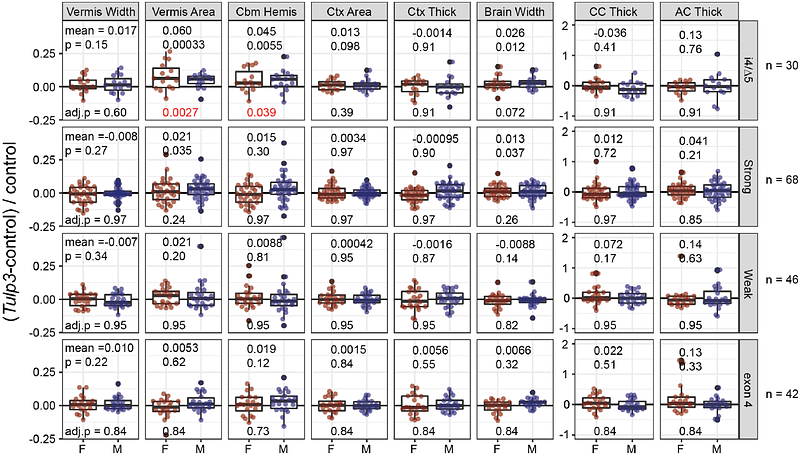Tulp3 quantitative alleles titrate requirements for viability, brain development, and kidney homeostasis but do not suppress Zfp423 mutations in mice.

Tulp3 quantitative alleles titrate requirements for viability, brain development, and kidney homeostasis but do not suppress Zfp423 mutations in mice.
McCoy, C. A.; Concepcion, D.; Mezody, M. G.; Lara, R. Z.; Deshpande, O.; Liang, C.; Long, R.; Hamilton, B. A.
AbstractTubby-like protein 3 (TULP3) regulates receptor trafficking in primary cilia and antagonizes SHH signaling. Tulp3 knockout mice are embryonic lethal with developmental abnormalities in multiple organs, while tissue-specific knockouts and viable missense alleles cause polycystic kidney disease. Human patients with TULP3 mutations present with variable, but often multi-organ fibrotic disease. We previously showed that mouse and human Tulp3 expression is negatively regulated by ZNF423, which is required for SHH sensitivity in some progenitor cell models. The level of TULP3 function required to prevent mutant phenotypes has not been known. Here we report a Tulp3 quantitative allelic series, designed by targeting the polypyrimidine tract 5-prime to the splice acceptor of a critical exon, that shows distinct dose-response effects on viability, brain overgrowth, weight gain, and cystic kidney disease. We find limited evidence for genetic interaction with Zfp423 null or hypomorphic mutations. Together, these results establish an approach to developing quantitative allelic series by exon exclusion, rank-order dose-sensitivity of Tulp3 phenotypes, and model thresholds for TULP3 function to prevent severe outcomes.